11 Rules for Rugs – and How to Break Them
Some rules were meant to be broken, especially when it comes to rugs
Janell Beals
12 August 2017
Designer, writer, renovator
I often get asked “What are the rules in selecting the size of rug to use in a room?” It can prove to be hard deciding what size rug is best for a space as there are so many ‘rules’ and just as many opposing opinions.
One popular rule is that the rug should be large enough to slide under the front legs of sofas and chairs in a seating arrangement, unifying the furniture. But just as frequently I’ve heard it suggested that all legs of the furniture should sit on the rug! So, rather than being bound by rules, being aware of these guidelines and options will assist you in determining what size rug provides the visual effect you desire in the rooms of your house.
One popular rule is that the rug should be large enough to slide under the front legs of sofas and chairs in a seating arrangement, unifying the furniture. But just as frequently I’ve heard it suggested that all legs of the furniture should sit on the rug! So, rather than being bound by rules, being aware of these guidelines and options will assist you in determining what size rug provides the visual effect you desire in the rooms of your house.
Rule 1: Front legs on the rug, back legs off
Here is a gorgeous room where the front legs of the sofa sit on the rug while the back ones are off. This approach really does work in most situations; the rug connects the various furniture pieces together while extending far enough into the room to create a sense of good proportion.
Here is a gorgeous room where the front legs of the sofa sit on the rug while the back ones are off. This approach really does work in most situations; the rug connects the various furniture pieces together while extending far enough into the room to create a sense of good proportion.
Another example of following this rule, seen from above, shows its effect very well. It works well here in large part because the tone of the rug is very similar to the wood flooring, making the break between the two visually subtle.
Rule 2: Some front legs on
Before moving onto examples where all the legs are placed on the rug, let’s look at a hybrid of the two approaches. Here only the front legs of the sofa sit on the rug while the placement of the chairs leave all four legs firmly on the rug. This proves to be more effective here than if only the front legs of the chairs fit onto the rug, because of the size of the room and the contrasting tone of the rug against the flooring.
Shop for rugs
Before moving onto examples where all the legs are placed on the rug, let’s look at a hybrid of the two approaches. Here only the front legs of the sofa sit on the rug while the placement of the chairs leave all four legs firmly on the rug. This proves to be more effective here than if only the front legs of the chairs fit onto the rug, because of the size of the room and the contrasting tone of the rug against the flooring.
Shop for rugs
Rule 3: All legs on the rug
One tip is to determine the furniture placement prior to selecting what size rug to use, which leads to the next rule: A room generally looks more pulled together if all the furniture legs are planted firmly on the rug.
One tip is to determine the furniture placement prior to selecting what size rug to use, which leads to the next rule: A room generally looks more pulled together if all the furniture legs are planted firmly on the rug.
Rule 4: No legs on the rug
Now if you would like to bring in just a small rug, perhaps one that introduces a pop of pattern into the room, another approach would be to have none of the furniture touching the rug. While this creates a completely different look, it also works!
Now if you would like to bring in just a small rug, perhaps one that introduces a pop of pattern into the room, another approach would be to have none of the furniture touching the rug. While this creates a completely different look, it also works!
Rule 5: 45 centimetres of bare floor around the rug
The next rule has been a standard for ages, and this approach states that there should be approximately 45 centimetres of bare floor between the rug edge and the perimeter walls of the room, bringing in traditional proportion. This guideline is great in rooms that are enclosed and separate from surrounding rooms, as opposed to open concept spaces.
The next rule has been a standard for ages, and this approach states that there should be approximately 45 centimetres of bare floor between the rug edge and the perimeter walls of the room, bringing in traditional proportion. This guideline is great in rooms that are enclosed and separate from surrounding rooms, as opposed to open concept spaces.
Using this rule in a small room is more successful if the 45 centimetres of bare floor exposed around the rug is reduced to approximately 20 centimetres.
Choosing a rug for your child’s room
Choosing a rug for your child’s room
Rule 6: Just a few centimetres of floor around the rug
Here is a successful application of the rule to run the rug up to within several centimetres of the wall around the entire room. While a traditional approach, it feels modern here due to the decor decisions.
Here is a successful application of the rule to run the rug up to within several centimetres of the wall around the entire room. While a traditional approach, it feels modern here due to the decor decisions.
Here is another wonderful example of this approach and how the rug defines the room design.
Rule 7: Extend the rug 30 to 45 centimetres around a bed
For a rug to look balanced under a bed, it should be large enough to extend beyond the sides of the bed at least 45 centimetres for a king or queen bed and at least 30 centimetres for a single bed. Depending upon the size of the room there can be more rug extension around the bed, but not less, which would make the rug look insignificant being covered mostly by the bed.
For a rug to look balanced under a bed, it should be large enough to extend beyond the sides of the bed at least 45 centimetres for a king or queen bed and at least 30 centimetres for a single bed. Depending upon the size of the room there can be more rug extension around the bed, but not less, which would make the rug look insignificant being covered mostly by the bed.
However, a smaller rug can also be very effective placed at the foot of a bed, bringing in just a little layer of interest and pattern. Here, the rug width should extend beyond the width of the bed to feel balanced.
Rule 8: Extend the rug 60 centimetres around a table
It is much easier to manoeuvre dining chairs if there is at least 60 centimetres of rug extending from the edge of the table on all sides. This rule allows the back legs of the chairs to be on the rug, even when being used. This can be a hard design goal to achieve due to the typical proportion of tables to rugs.
It is much easier to manoeuvre dining chairs if there is at least 60 centimetres of rug extending from the edge of the table on all sides. This rule allows the back legs of the chairs to be on the rug, even when being used. This can be a hard design goal to achieve due to the typical proportion of tables to rugs.
Rule 9: Cover the walking area
The rug should cover the majority of the walking area in a hallway or entry. For both safety and comfort, it is preferable to have both feet fall within the surface of the rug in a high traffic area.
The rug should cover the majority of the walking area in a hallway or entry. For both safety and comfort, it is preferable to have both feet fall within the surface of the rug in a high traffic area.
This hall is a beautiful example of the previous guideline.
Rule 10: Combine rugs
In making rug decisions for a room, another approach would be to bring in multiple rugs. This can be very effective when the room is large with more than one seating arrangement.
In making rug decisions for a room, another approach would be to bring in multiple rugs. This can be very effective when the room is large with more than one seating arrangement.
Rule 11: Bend the rules
While all these rules have merit, apparently this room believes the rule of all legs on or off is meant to broken, and doesn’t it look great!
While all these rules have merit, apparently this room believes the rule of all legs on or off is meant to broken, and doesn’t it look great!
There are multiple rules to guide the decision of what size rug is best for the rooms of a home and many of them completely contradict one another! But being aware of the various rules can provide guidelines to help determine which approach is most appealing to you and will be effective in achieving the look you desire in your individual spaces.
TELL US
Do you have rugs in your home? Share your photos in the Comments section.
MORE
Expert Tips for Styling Your Room With a Rug
TELL US
Do you have rugs in your home? Share your photos in the Comments section.
MORE
Expert Tips for Styling Your Room With a Rug
Related Stories
Expert Advice
Cushion Masterclass: How to Choose and Style Like a Pro
An interior designer reveals the secrets to mixing colourful and patterned cushions on your sofa and bed
Full Story
Interior Design
How the Rise of Performance Fabrics Is Changing Interior Design
Designer Brynn Olson reveals why performance textiles have become a game changer in interior design... and our homes
Full Story
Interior Design
Expert Tips on Choosing Bedding for Every Type of Sleeper
By Niki Bruce
Is your bedding preventing you from getting a good night's rest?
Full Story
Furniture
Expert Tips on Why you Need to Buy Into Velvet
By Niki Bruce
This tactile fabric brings a luxurious and sophisticated edge to your rooms
Full Story
Dining Rooms
10 Tips for Getting a Dining Room Rug Just Right
Is the rug you’re eyeing the right size, shape and weave for your dining room? Find out what to keep in mind
Full Story
Interior Design
The Story Behind Linen and Why It's so Good for Interiors
Crisp linen isn’t just for bedding and clothing – it’s also a great choice for upholstered furniture
Full Story
Interior Design
How to Choose the Right Window Treatment
By pickjunction
Curtains, blinds, shades, and films – here’s how to decide which style will best suit your needs
Full Story
Interior Design
A Buyer's Guide to Curtains
By Pia Sinha
Curtains can make a room, but only when chosen correctly. Our buyer’s guide shows you what to consider
Full Story
Interior Design
Sustainable Textiles That Don't Cost the Earth
By Janet Dunn
Make smart choices by using textiles that look good, perform well and have sustainability credentials too
Full Story
Expert Advice
Window Treatments That Incorporate Natural Light
By mc2singapore
Have more, or less, natural light stream in through your windows by using window treatments
Full Story



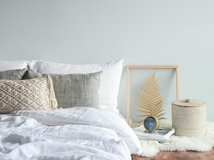


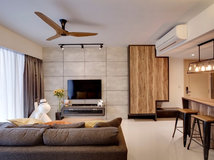

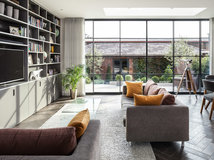
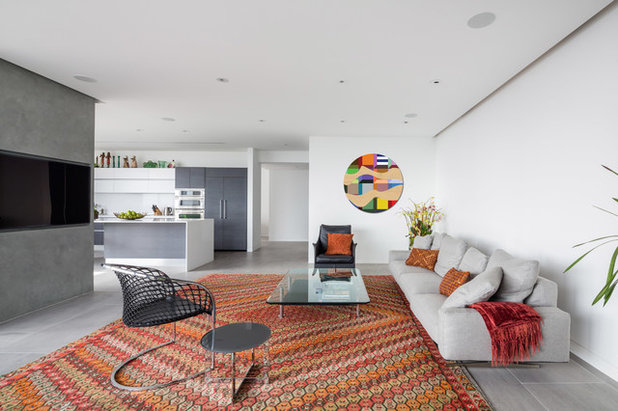
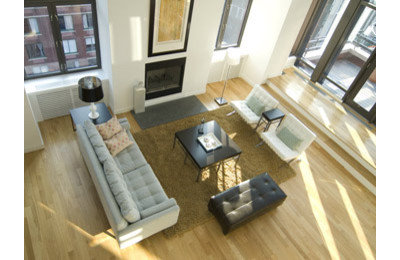
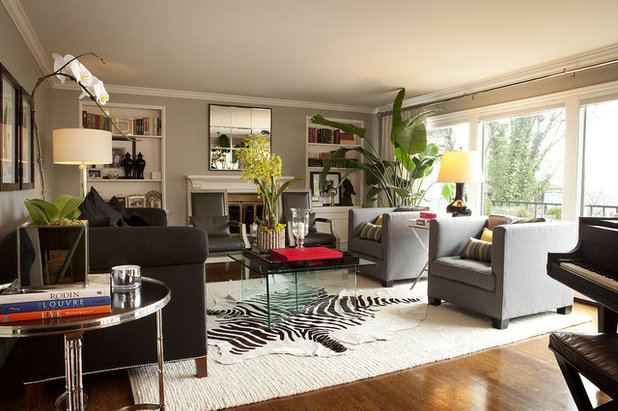
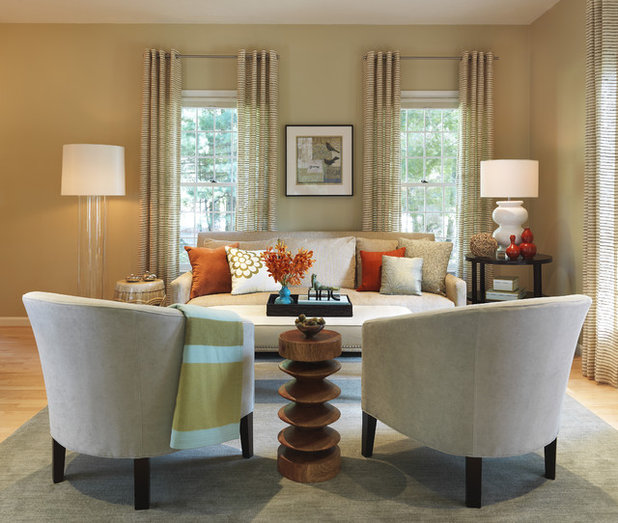
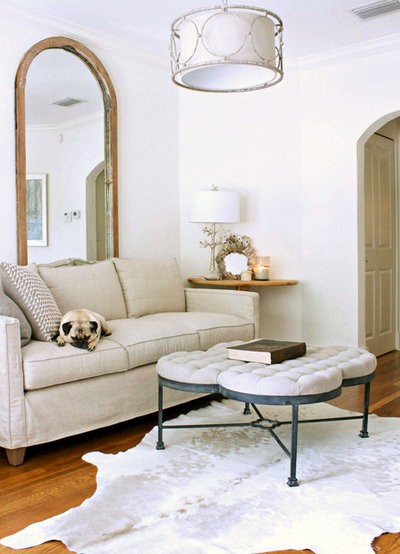
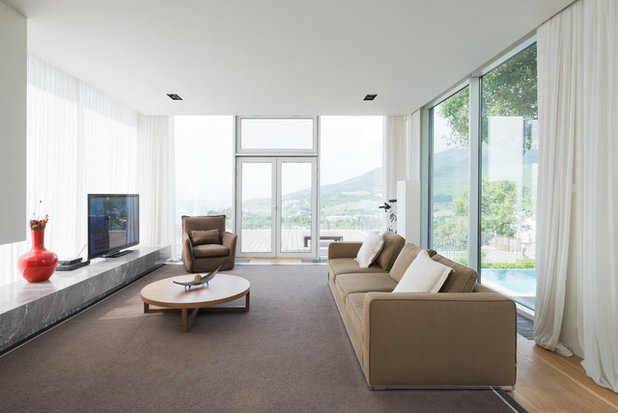
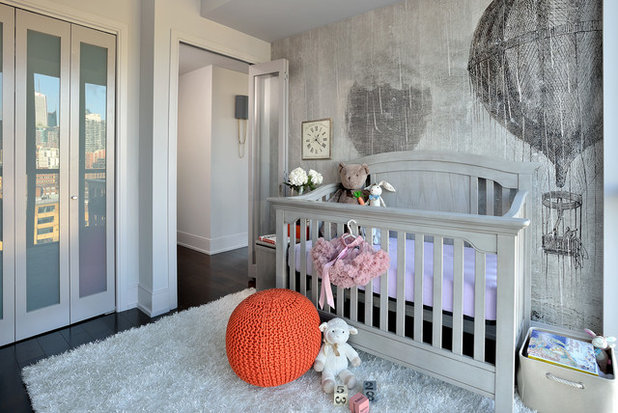
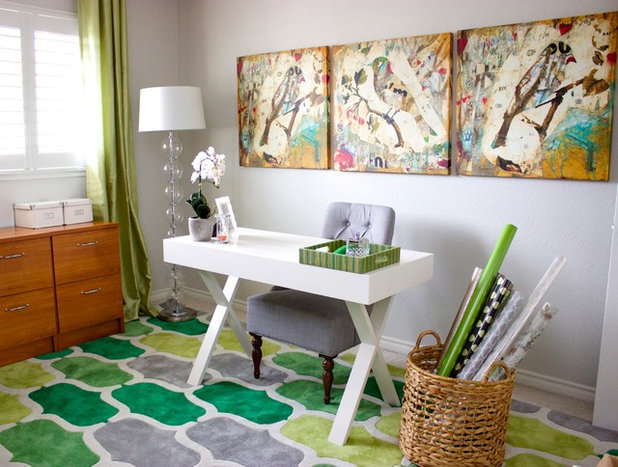
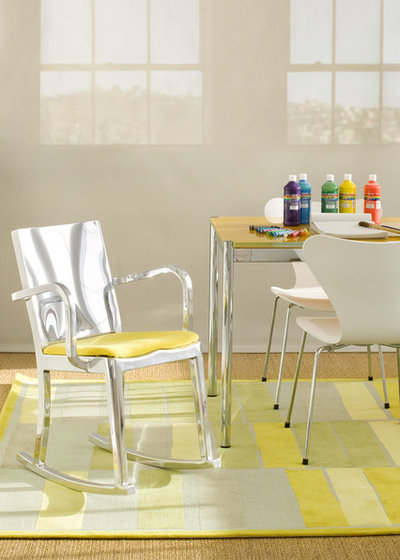
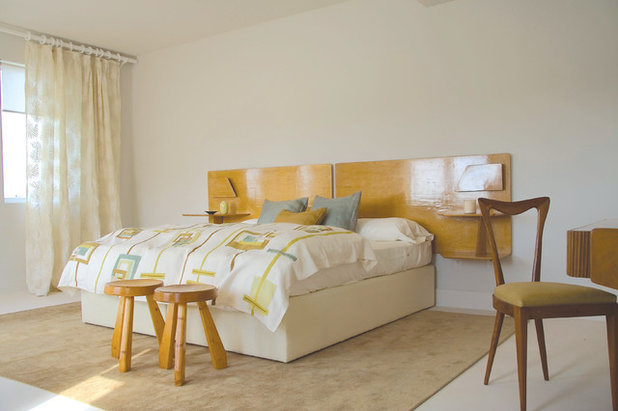
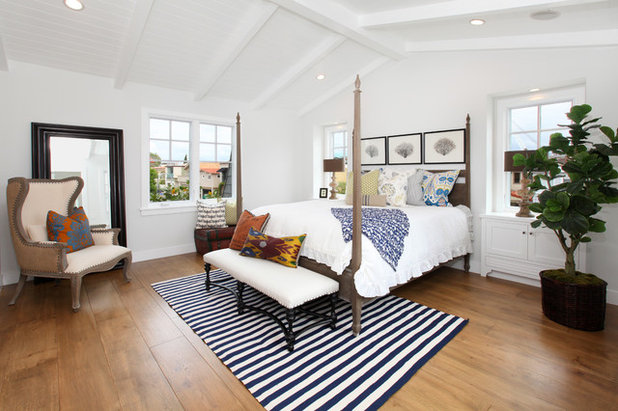
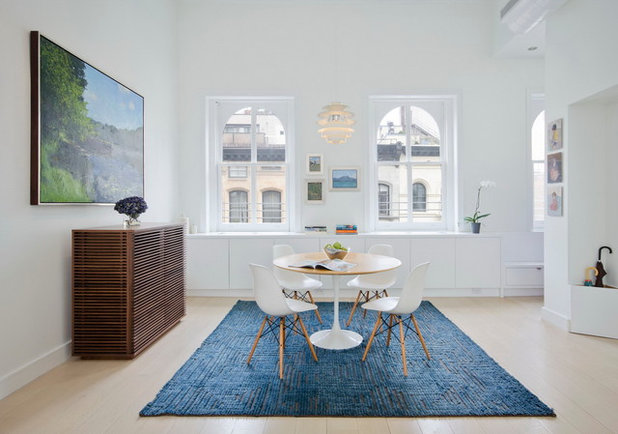
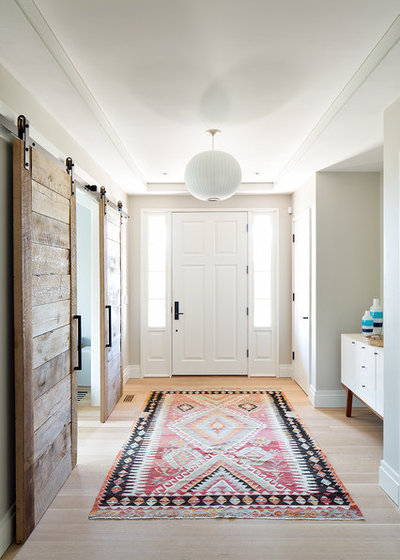
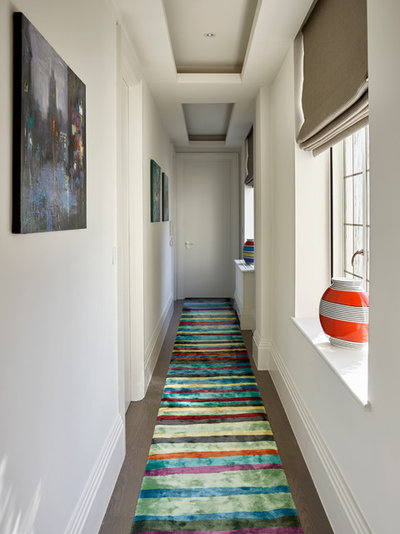
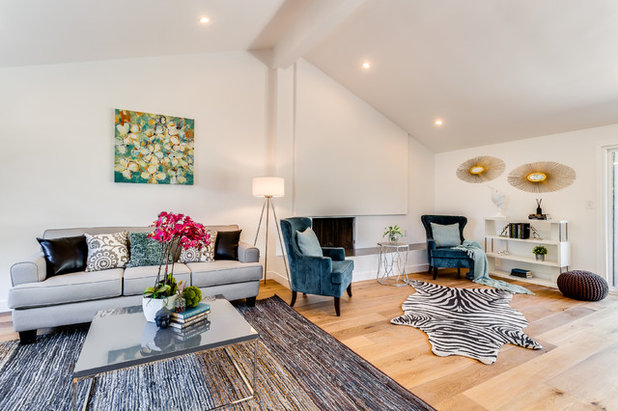
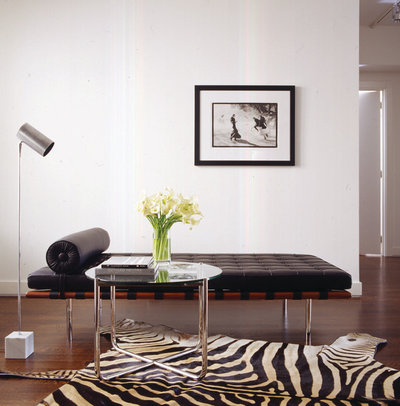
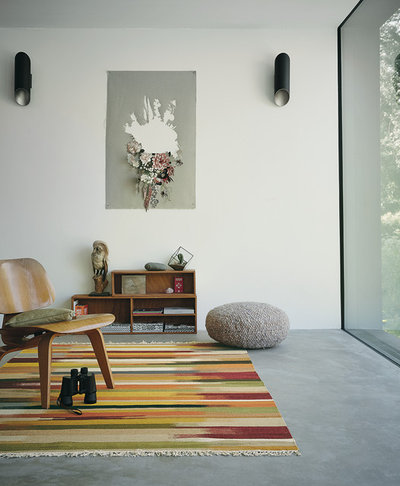
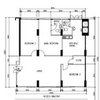
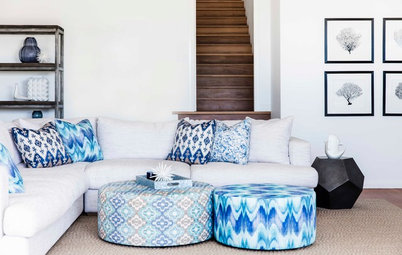
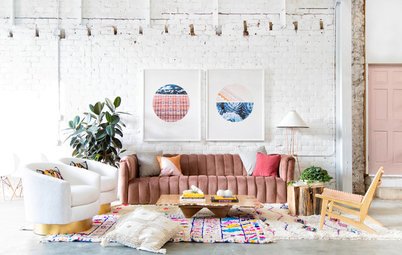
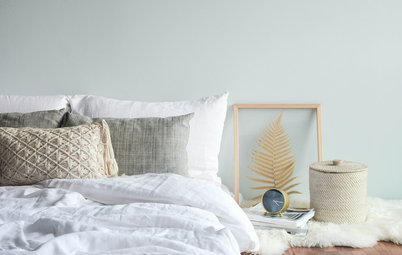
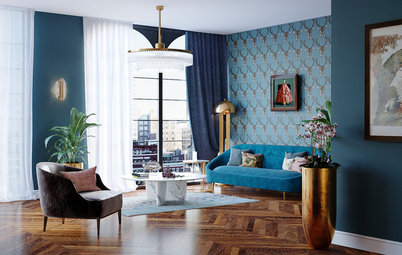
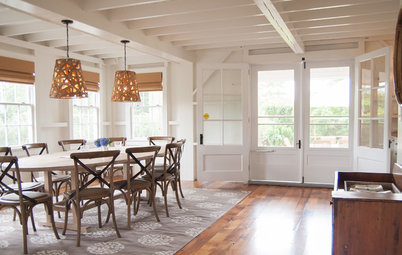
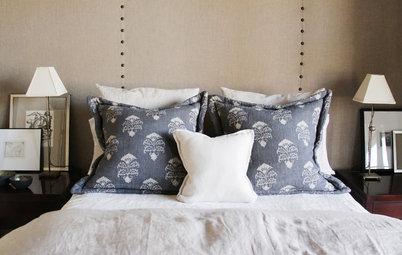
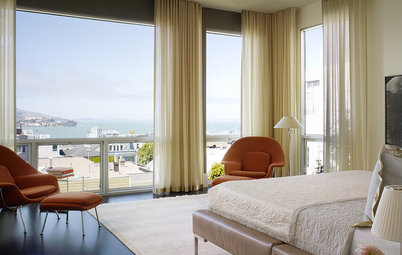
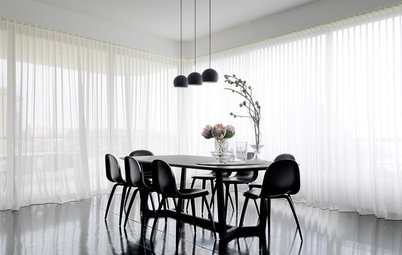
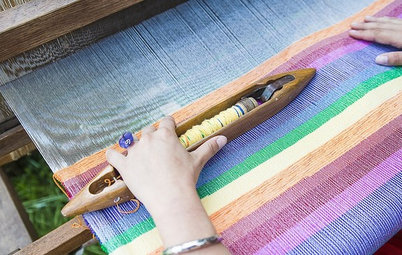
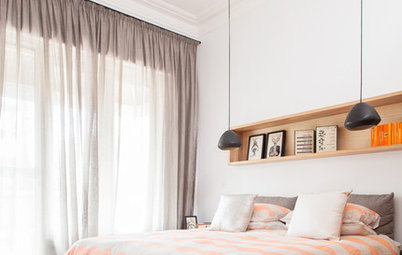
Question. How do you handle the theory of having front feet on but when the accent chairs swivel? Obvi to be half on and half off would compromise the stability. Is it awkward to have them float off?
@mpillik I put huge vinyl “bumpers” on the bottom of the chairs, but only on the half that’s not on the rug. That levels the seats. The trick is to find something the same thickness as your rug.
We have a pretty large bedroom (18x18), and that doesn’t include the bay window search area. We have a 9’x13’ rug in there right now. I’m wanting to redo the colors in the room, so I’m debating on getting another 9x13 or going up to a 10x14. My only concern is the 10x14 would be really close to a tall dresser we have in front of a small wall. And it literally fits perfect in that space so I’d have no idea where to move it to. So that being said, what are the “rules” on how close an area rug can be near furniture?